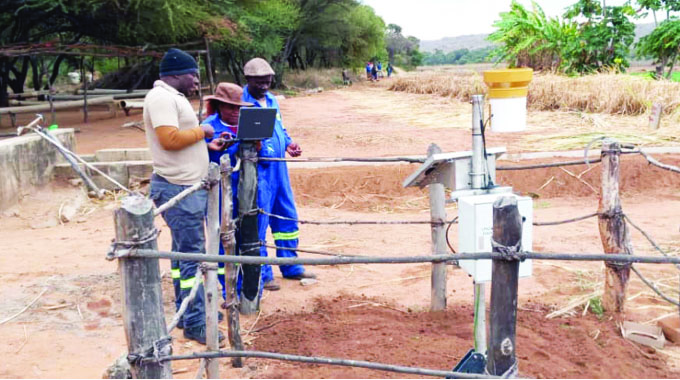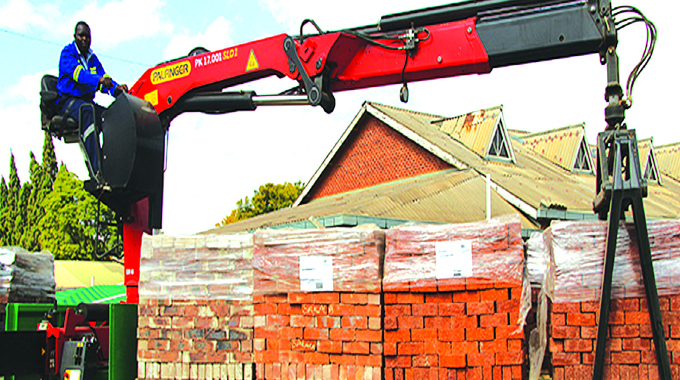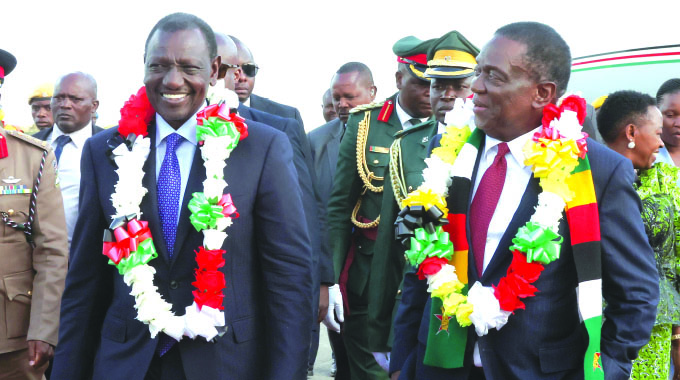Boost for Mat South irrigation schemes

Yoliswa Dube-Moyo Bulawayo Bureau
Automatic weather stations in irrigation schemes in Matabeleland South are being installed by the Meteorological Services Department to facilitate area specific weather reporting, which goes a long way in boosting productivity and mitigating climate change-induced shocks.
This comes as climate change has become a topical global issue and Government has vowed to scale up its fiscal support to capacitate the Met Department’s s role in mitigating natural disasters and enhancing farming, in particular.
Implemented in partnership with the United Nations Development Programme and with Government support, the project is set to assist data collection and give area specific weather forecasts to improve food security and nutrition.
It is being rolled out under the Green Climate Fund, which is a unique global platform to respond to climate change by investing in low-emission and climate-resilient development.
An automated weather station is an integrated system of components that are used to measure, record, and often transmit key weather parameters.
Weather stations are used on land and sea for a variety of operational and research purposes.
Matabeleland South Provincial Meteorological Officer Mr Rodgers Munyira said the thrust of the project was to boost production and ensuring food security and nutrition.
“It’s a Green Climate Fund programme being implemented by the UNDP with the Ministry of Agriculture as the leading implementing agency in the country,” he said.
“The thrust is food and nutrition security within the agricultural sector. As the Meteorological Services Department, we’re in charge of the installation of the automatic weather stations and the automatic rain gauges across Matabeleland South, Masvingo and Manicaland provinces.”
Mr Munyira said Matabeleland South was allocated equipment for four automatic weather stations and four automatic rain gauges.
“We were the biggest beneficiaries of the programme. Out of the gadgets we’ve received, we’ve installed automatic weather stations at Chikwarakwara, Shashe, Nhwali and Masholomoshe Irrigation Schemes,” he said. “At Mankonkoni Irrigation Scheme, we installed an automatic rain gauge, as well as Mzinyathini in Umzingwane. We’re installing two other automatic rain gauges in Matobo. We’re trying to mitigate food and nutrition shortage due to climate change,” said Mr Munyira.
“We’ve realised that our measuring instruments and meteorological stations are too far apart. With the rainfall variabilities due to climate change affecting food production, we’re saying we need more stations to talk about exactly what is happening at a place and its surroundings.”
He said from Beitbridge District’s Chikwarakwara to Plumtree there were no other meteorological station except in Kezi as stations are far apart, and estimated readings may not represent actual weather phenomena happening at each place.
In view of climate change, Mr Munyira said the meteorological experts need to have more information to make an informed decision on the actual weather patterns at every place.
“We want to have area specific forecasts. Matabeleland South starts from Bulilima, and to get to Chikwarakwara, it’s more than 700km,” he said.
“These two areas fall under two different regions but we’re giving a blanket forecast. We’ve installed the equipment at irrigation schemes such that we’ll be using the data to help get the forecast for that particular place. This will be useful to the agricultural activities happening in those areas.”
Matabeleland South provincial agricultural officer Mr Mkhunjulelwa Ndlovu said the automatic weather stations would provide critical information needed for agricultural programming.
“Weather is a denominator factor in agriculture because in order to make any intervention, you need to understand the weather patterns in terms of rainfall, heatwaves and cold waves,” he said.
“You can plan your enterprise accordingly when you know what’s happening with the weather. We have a new map showing the zoning aspect within the country. We have region 1A up to 5B. In most cases, the Met Department has very isolated weather stations.
“In Gwanda District, we have West Nicholson and if you go down to Nhwali, Mankonkoni and Rustlers, the weather and rainfall patterns have a vast difference.”
Mr Ndlovu said there was a need to understand the rainfall patterns and temperatures for the southern part, which is classified under region 5B in order to plan accordingly.
“This determines what can be done in terms of farming. During the rainy season, we need to understand the amount of rainfall received in relation to irrigation scheduling,” he said.
“If we get enough rain, we know how many days we can come in with irrigation or when irrigation needs to be supplemented, as well as the season length in terms of choosing crop variety.
“In terms of livestock, we need to plan in relation to biomass. If the season length is very short, we have to quickly mobilise resources to support our livestock.”








Comments